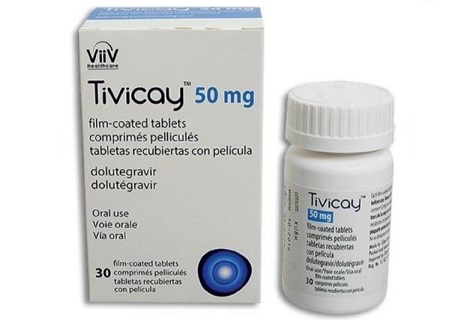Nikhil Prasad Fact checked by:Thailand Medical News Team Mar 12, 2024 1 year, 1 month, 2 weeks, 10 hours ago
Medical News: The World Health Organization (WHO) recently released its 2024 HIV Drug Resistance (HIVDR) Report, shedding light on the concerning trend of increased resistance to dolutegravir, a key antiretroviral therapy for HIV.
 Dolutegravir
Dolutegravir
This
Medical News report delves into the details of the report, highlighting its findings, implications, and recommendations for addressing this pressing issue.
Understanding the Data: Rise in Dolutegravir Resistance
The WHO's report presents a mixed picture of progress and challenges in the fight against HIV. While there have been commendable achievements in viral load suppression among populations using dolutegravir-containing antiretroviral therapy (ART), there is a troubling increase in HIV drug resistance (HIVDR) to dolutegravir. Despite its reputation as a highly effective and well-tolerated drug with fewer side effects, resistance rates have ranged from 3.9% to 8.6% on average, with some regions experiencing rates as high as 19.6%. This rise in resistance is particularly alarming given dolutegravir's status as the WHO's recommended first- and second-line therapy since 2018.
Expert Insights: Calls for Vigilance and Research
In response to these findings, WHO officials emphasize the urgent need for enhanced research and vigilance in HIV care delivery. Dr Meg Doherty, Director of the WHO Department of the Global HIV, Hepatitis, and STI Programs, underscores the importance of standardized surveillance of HIV drug resistance to effectively prevent, monitor, and respond to these challenges. This call to action underscores the gravity of the situation and the necessity for a coordinated global response.
Global Targets and Progress: Off Track
Despite significant strides in HIV treatment access, the report reveals that global targets for HIV are off track. While over 75% of the 39 million people living with HIV were receiving treatment in 2022, there were still 1.3 million new HIV infections and 630,000 HIV-related deaths between 2017 and 2022. Many countries have adopted WHO guidelines for preferred treatments and increased viral load monitoring, yet the overall progress falls short of established targets. This discrepancy underscores the need for proactive efforts to improve the quality of HIV treatment and care services worldwide.
Challenges and Solutions: Strengthening Surveillance and Quality of Care
The report highlights several challenges facing HIV treatment programs, including suboptimal retention in care, population-level viral load suppression, and antiretroviral drug stock-outs. To address these challenges, WHO recommends routine implementation of standardized surveillance of HIVDR and monitoring of quality-of-care indicators. Strengthening data reporting systems and engaging ART clinics and programs in developing locally appropriate solutions are crucial steps in optimizing service delivery quality and reducing the emergence of drug-resistant HIV.
Looking Ahead: Recommendat
ions for Action
Moving forward, WHO calls for a coordinated approach to minimize the spread of HIV drug resistance. This includes scaling up surveillance efforts, addressing gaps in quality of care, and promoting responsible use of antiretroviral therapies. Additionally, WHO emphasizes the importance of integrating monitoring of drug resistance into HIV prevention programs, particularly in the context of emerging interventions such as pre-exposure prophylaxis (PrEP) with long-acting injectable cabotegravir (CAB-LA).
https://www.thailandmedical.news/news/long-acting-injectable-treatment-maintains--hiv-viral-suppression-
https://www.thailandmedical.news/news/hiv-news-new-injectable-hiv-prep-that-last-for-two-months-costing-us-3,700-developed-for-hiso-sluts-and-upmarket-social-escorts
Conclusion: A Call to Action
In conclusion, the WHO's 2024 HIV Drug Resistance Report serves as a wake-up call for the global community to recommit to the fight against HIV. While progress has been made, the rising rates of dolutegravir resistance underscore the need for renewed efforts and innovative solutions. By strengthening surveillance systems, improving quality of care, and promoting responsible use of antiretroviral therapies, we can mitigate the threat of HIV drug resistance and move closer to achieving the goal of ending the HIV epidemic.
For the latest on HIV Drug Resistance, keep on logging to Thailand
Medical News.
Read Also:
https://www.thailandmedical.news/news/breaking-news-hiv-study-shows-new-hiv-drug-lenacapavir-taken-once-every-six-months-can-maintain-low-viral-loads-effectively
